Fitting an external draught excluder
Front or back doors can be better draught-proofed simply by fitting draught excluders around the door frame. Because most front doors open inwards, these excluder strips are normally positioned on the outside frame. Designs vary, the one shown below is basically made of a metal strip that holds a rubber seal which fits tightly against the door when it is in a closed position – therefore stopping any draughts from entering the house.
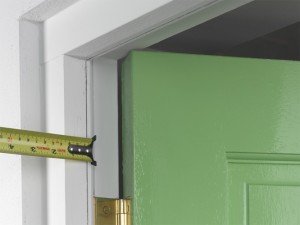 |
1. Follow any manufacturer’s guidelines but most will recommend marking a guide around the edge of the frame. Here, it is 4mm from the frame edge. |
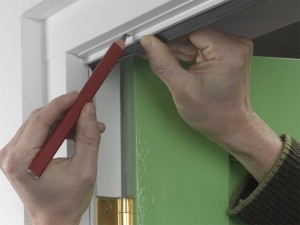 |
2. Cut the head section of the excluder to length with a junior hacksaw. Hold it in position against the line and mark off fixing holes. |
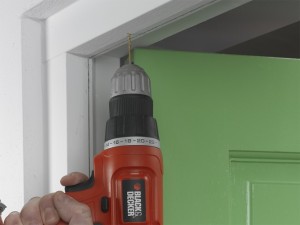 |
3. Drill pilot holes at the marked points. If the excluder kit includes nails instead of screws, pilot holes should not be necessary. |
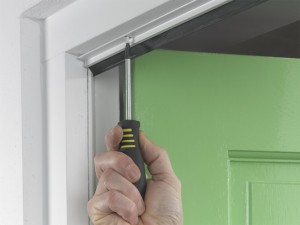 |
4. Reposition the head section and screw it in place. Cut the side sections of the draught excluder strip to length and repeat the marking procedure. |
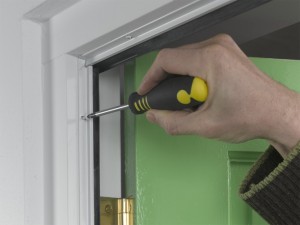 |
5. Corners should be neat for a tight seal. If necessary, use a mitre block to cut the corners. When you’re happy with the fit either side, fix both side strips in place. |
Draught excluder tips
- Most excluders will have some adjustment capability in that the holes allow you to shift the excluder slightly, further towards or away from the door surface. Therefore once fitted, close the door and check that good contact is made between the rubber strip and the door surface – if there are any gaps, or the door won’t close properly, you can shift the strip position as required.
- Where small nails or pins have been supplied for fixing, it can be a fiddly job knocking them in place with any accuracy – it is also easy to damage the excluder if your hammer slips. Therefore after you have established the nail position with a couple of light knocks with the hammer, it can then be easier, and more accurate, to use a hammer and nail punch to knock the nail into its final position.
- When carrying out any type of draught excluding, remember that it is also important for rooms to have adequate ventilation. This is essential if you have a solid fuel fire, a gas fire or a boiler with an open flue. This is why in most cases its not suitable to draught-proof in kitchens and bathrooms or in the vicinity of any fuel-burning appliance, unless you are certain that the room has adequate ventilation.

handy article – just fitting some now and looking around for guides!! (i might sell doors but dont fit them..)
Thanks for this!! Will now no longer need to ask my dog to lie in front of the door to prevent the drafts!!
Have just read your article on external door draught excluder, it looks exactly like the type i require, can you tell me the make and type details please.
Great article with photo’s. Many thanks,
Hi John,
Thanks for your comment. The seal is the ‘Stormguard Metal Around Door Seal – White’ Part No. – 01BS005. There is also an aluminium colour option. You can get them in B&Q, amongst other places.
Best,
Julian